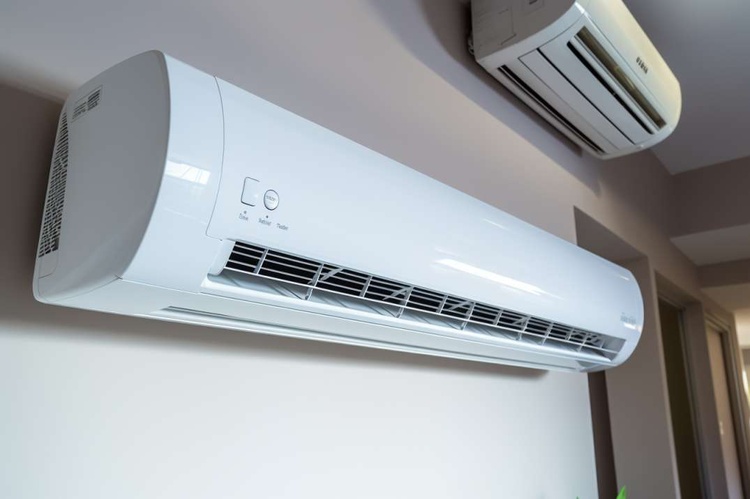Air Conditioning Solutions: Keeping Your Home Cool and Comfortable
Air conditioning has become an essential part of modern living, providing comfort and relief from hot temperatures. As technology advances, homeowners have more options than ever to keep their living spaces cool and comfortable. This article explores various air conditioning solutions, focusing on ductless air conditioning systems and mini-split units, to help you make an informed decision about the best cooling option for your home.

Ductless air conditioning systems offer several advantages over traditional central air systems. They are easier to install, more energy-efficient, and provide targeted cooling to specific areas of your home. This zoned approach allows you to cool only the rooms you’re using, potentially saving on energy costs.
How does a mini-split system work?
Mini-split systems operate on the same principle as traditional air conditioners but with a more streamlined design. The outdoor unit contains the compressor and condenser, while the indoor unit houses the evaporator and air handler. Here’s a basic overview of how a mini-split system works:
-
The outdoor unit compresses refrigerant and sends it to the indoor unit.
-
The indoor unit’s evaporator coil absorbs heat from the room air.
-
The cooled air is then blown back into the room by the air handler.
-
Warm air and moisture are transferred outside through the refrigerant lines.
This process continues until the desired temperature is reached, as set on the system’s thermostat. Mini-split systems are highly efficient because they don’t lose cooled air through ductwork, which can account for up to 30% of energy consumption in central air systems[1].
What are the benefits of ductless air conditioning?
Ductless air conditioning systems offer numerous benefits for homeowners:
-
Energy efficiency: Without ductwork, these systems lose less cool air, resulting in lower energy bills.
-
Flexibility: You can cool individual rooms or zones, providing customized comfort throughout your home.
-
Easy installation: Mini-split systems require only a small hole in the wall for the refrigerant lines, making installation quick and minimally invasive.
-
Improved air quality: Ductless systems have built-in air filters that can help reduce allergens and pollutants in your home.
-
Quiet operation: The noisiest components are located outside, resulting in quieter indoor operation.
-
Space-saving: Indoor units are compact and can be mounted on walls or ceilings, freeing up valuable floor space.
How do I choose the right air conditioner for my home?
Selecting the right air conditioner depends on several factors:
-
Home size and layout: Consider the square footage of your home and its floor plan to determine the cooling capacity needed.
-
Climate: Your local climate affects the size and type of air conditioner you’ll need for optimal performance.
-
Energy efficiency: Look for systems with high SEER (Seasonal Energy Efficiency Ratio) ratings for better energy savings.
-
Budget: Consider both upfront costs and long-term energy savings when making your decision.
-
Existing infrastructure: If your home lacks ductwork, a ductless mini-split system may be the most cost-effective option.
Consulting with a professional HVAC technician can help you determine the best air conditioning solution for your specific needs and home layout.
What maintenance is required for ductless air conditioning systems?
Proper maintenance is crucial for ensuring the longevity and efficiency of your ductless air conditioning system. Here are some key maintenance tasks:
-
Clean or replace air filters regularly, typically every 1-3 months.
-
Keep the outdoor unit free from debris and vegetation.
-
Clean the indoor unit’s coils and fans annually.
-
Check and clean the condensate drain line to prevent clogs.
-
Schedule professional maintenance at least once a year to inspect refrigerant levels, electrical connections, and overall system performance.
Regular maintenance not only extends the life of your system but also helps maintain its energy efficiency, potentially saving you money on energy bills in the long run.
| Brand | System Type | Cooling Capacity (BTU) | SEER Rating | Estimated Cost Range |
|---|---|---|---|---|
| Mitsubishi | Mini-Split | 9,000 - 36,000 | 19 - 30.5 | $1,500 - $5,000 |
| Daikin | Mini-Split | 9,000 - 48,000 | 17 - 27.4 | $1,400 - $5,500 |
| LG | Mini-Split | 9,000 - 36,000 | 20 - 28 | $1,300 - $4,800 |
| Fujitsu | Mini-Split | 9,000 - 48,000 | 18 - 33 | $1,600 - $5,200 |
| Carrier | Mini-Split | 9,000 - 36,000 | 17 - 42 | $1,700 - $5,500 |
Prices, rates, or cost estimates mentioned in this article are based on the latest available information but may change over time. Independent research is advised before making financial decisions.
Ductless air conditioning systems offer an efficient and flexible solution for home cooling. With their energy-saving capabilities, targeted cooling options, and easy installation, mini-split systems are becoming increasingly popular among homeowners. By understanding the benefits and maintenance requirements of these systems, you can make an informed decision about the best air conditioning solution for your home, ensuring comfort and energy efficiency for years to come.






